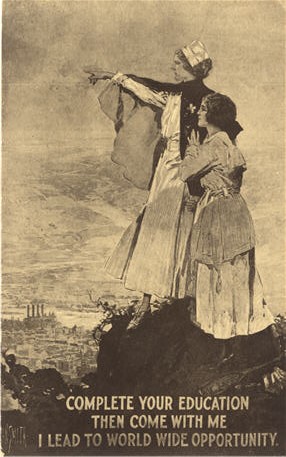ExhibitionPicturing Nursing as a Career
Nursing as a profession began about 150 years ago led by social reformers, like Florence Nightingale, in the United Kingdom and the United States.
A career in nursing offered new opportunities for women such as economic independence and freedom from constricting domestic lives. The postcards promote opportunities for service and travel to distant lands in the military or the Red Cross, while public health nursing offered the chance to engage in meaningful service to the community.
- 0 of 0
- ForwardForward
- BackBack
- EnlargeEnlarge Image
- AudioPlay Audio
- DocumentRead Transcript
- FolderFolder
- CarouselCarousel
- Digital GalleryDigital Gallery
- VideoVideo
- View PDFView PDF
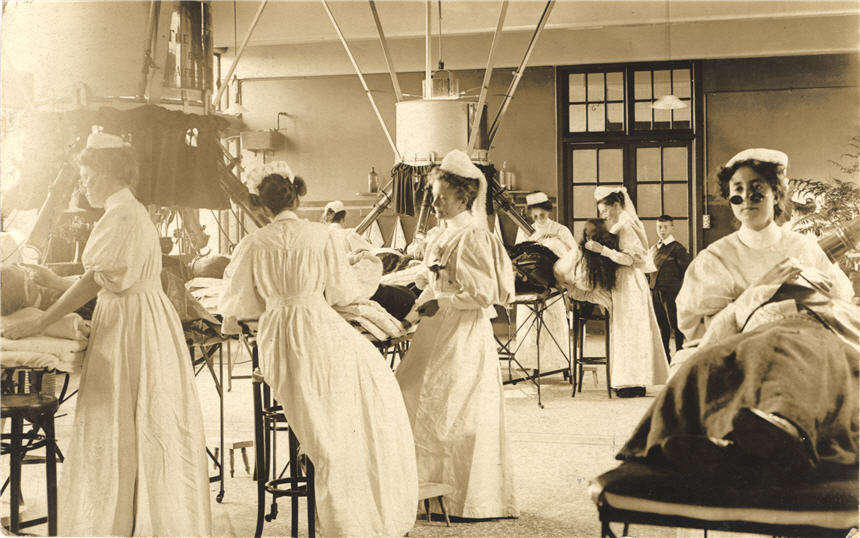
Trained nurses administer the Finsen Light Treatment at the London Hospital, ca. 1900
Nurses worked at the forefront of science in the early 20th century implementing new treatments like light therapy at the London Hospital. Danish scientist Niels Finsen developed this treatment, which concentrated light through a lens, to help treat skin tuberculosis by killing the bacteria that caused the disease.

Classroom of the Illinois Post Graduate and Training School for Nurses, Chicago, ca. 1914
Produced by Illinois Post Graduate and Training School for Nurses
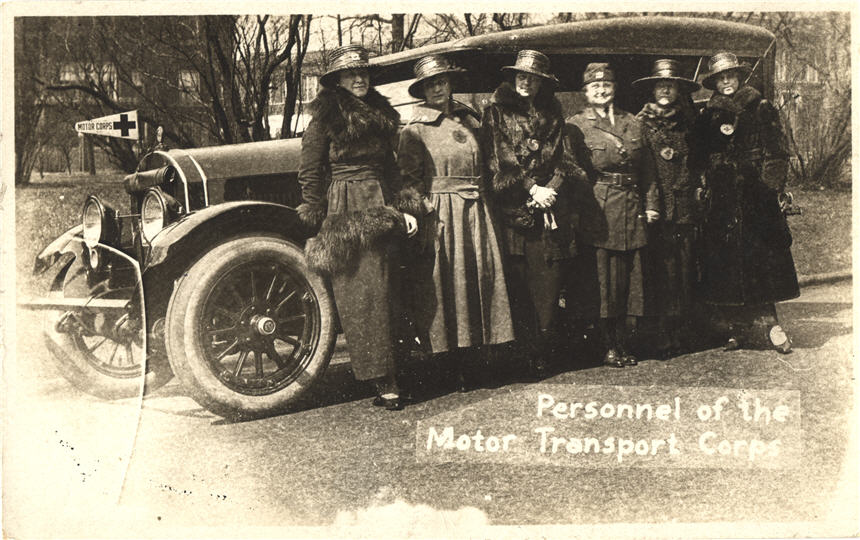
Red Cross Motor Corp promotional card, ca. 1917
Produced by American Red Cross
Women’s newfound economic independence and self-confidence was reflected in the more relaxed fashions of the day. Advertising images promoted modern trends, representing nurses as ‘modern women’ with an interest in shopping and fashionable clothes.
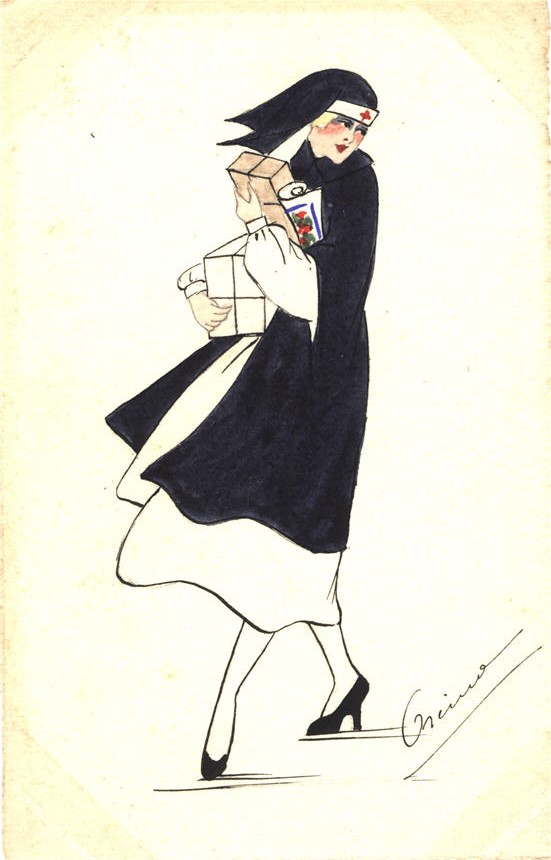
A modern nurse, France, 1917
Women’s newfound economic independence and self-confidence was reflected in the more relaxed fashions of the day. Advertising images promoted modern trends, representing nurses as ‘modern women’ with an interest in shopping and fashionable clothes.
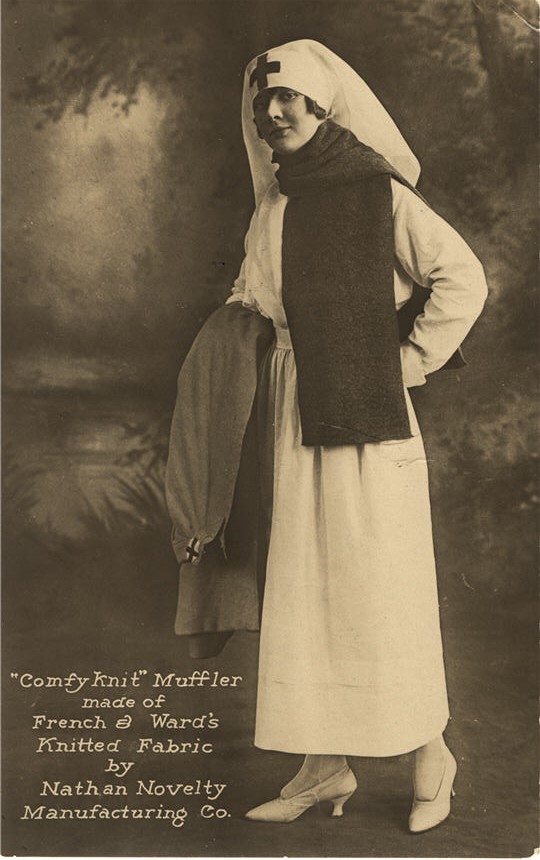
An image of a nurse modeling the “comfy knit” muffler, ca. 1918
Produced by Nathan Novelty Manufacturing Co., New York
Women’s newfound economic independence and self-confidence was reflected in the more relaxed fashions of the day. Advertising images promoted modern trends, representing nurses as ‘modern women’ with an interest in shopping and fashionable clothes.
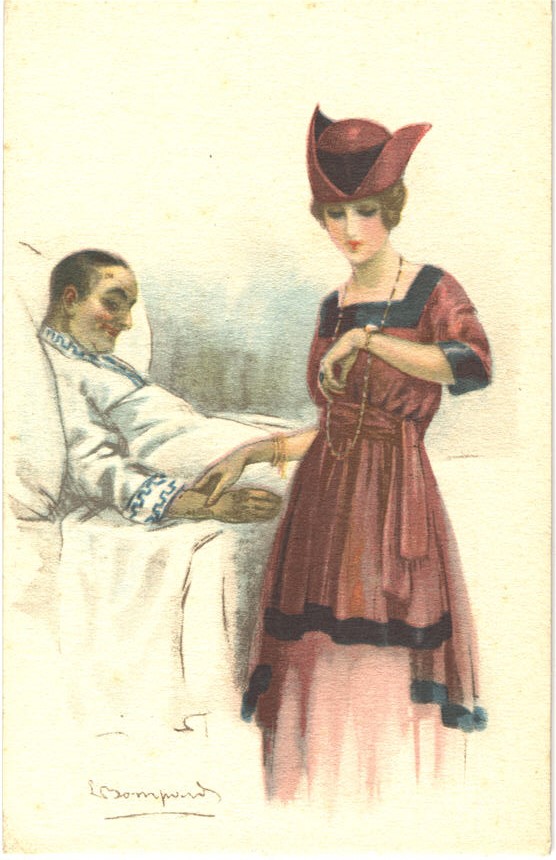
The nurse’s uniform imagined as a trendy modern outfit, Italy, 1907
Created by Luigi Bompard (1879—1953)
Italian painter, illustrator, and fashion designer Luigi Bompard imagined the nurse’s uniform as a reflection of the fashionable dress code of the day. Images such as this promoted ideas about nurses as ‘modern’ women, economically independent and self-confident, with interests in shopping and fashionable clothes.
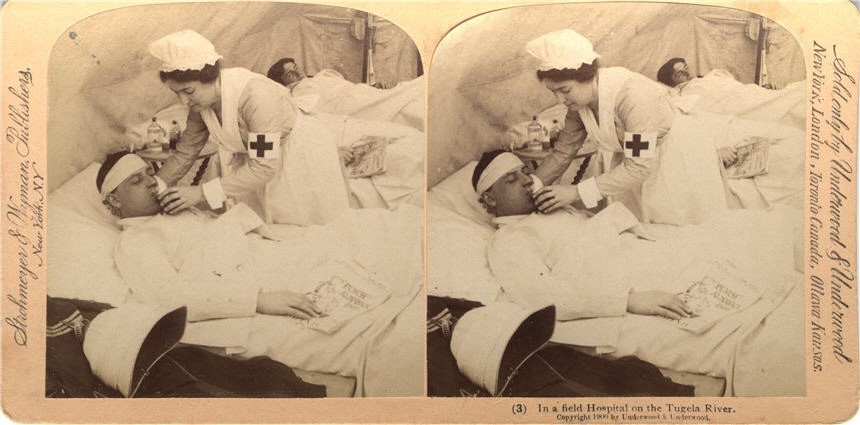
Field hospital on the Tugela River in South Africa during the Boer War, 1900
Produced by Underwood & Underwood, New York
The Red Cross offered opportunities to work worldwide; news of nursing in faraway places made nursing seem like an adventurous, rewarding career. The nurse cradling an injured soldier evokes associations of Mary, the greatest mother, mourning her crucified son, imagery that appealed to pious women searching for fulfillment outside the home.
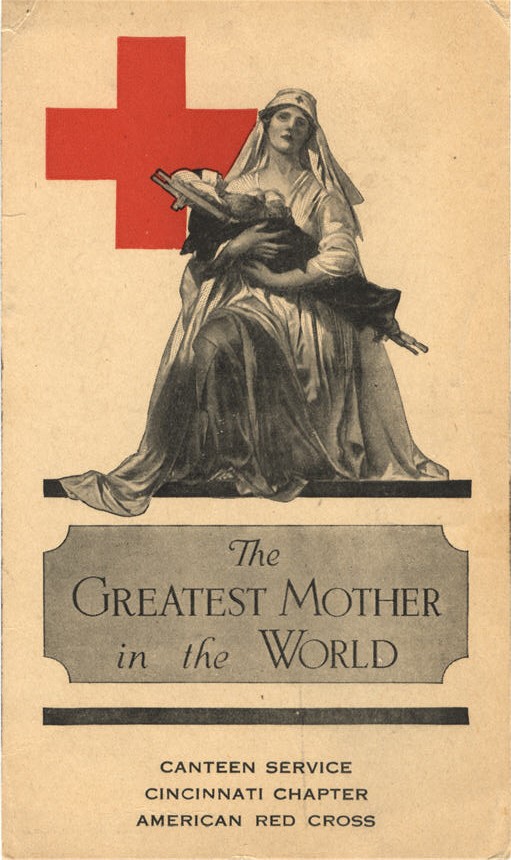
The Greatest Mother in the World, ca. 1918
Produced by American Red Cross, Cincinnati, OH Chapter
The Red Cross offered opportunities to work worldwide; news of nursing in faraway places made nursing seem like an adventurous, rewarding career. The nurse cradling an injured soldier evokes associations of Mary, the greatest mother, mourning her crucified son, imagery that appealed to pious women searching for fulfillment outside the home.
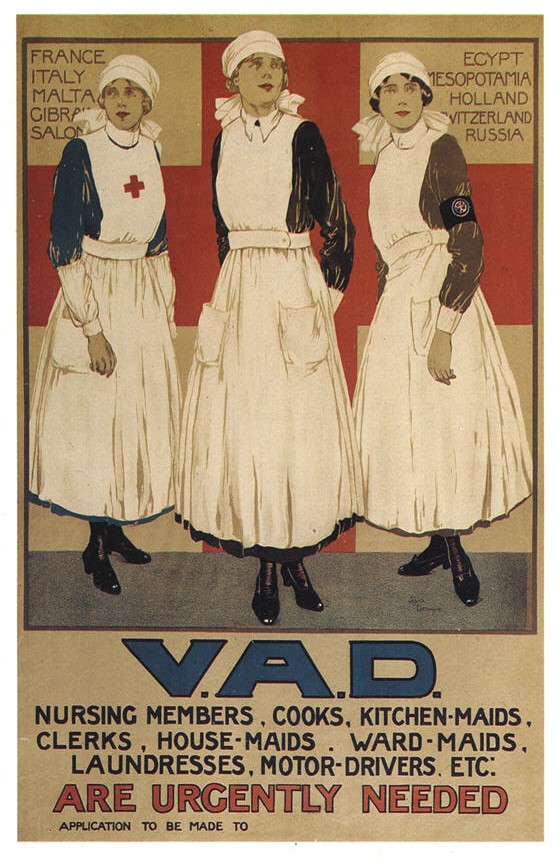
Postcard reproduction of a 1914 Voluntary Aid Detachment recruitment poster, ca. 1990
Produced by Imperial War Museum, United Kingdom
The United Kingdom created a career structure for army nurses in 1901. Women found serving in the military rewarding but it was the Voluntary Aid Detachment (VAD), with its promise of adventure and foreign travel, that encouraged civilians to enlist.
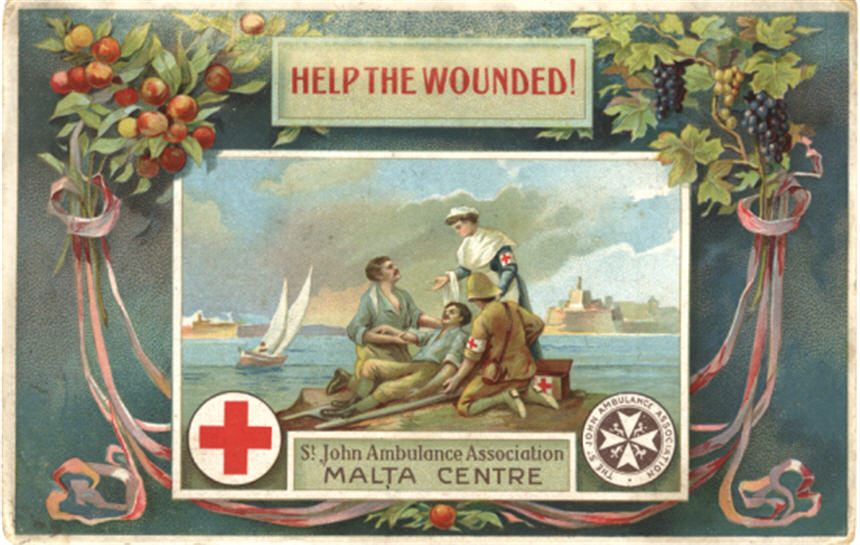
Help the wounded!, ca. 1915
Produced by St. John Ambulance Association Malta Centre
St. John Ambulance Association, a voluntary aid association formed in England in 1877, joined forces with the Red Cross in 1914 to create the Joint War Committee and expand the Voluntary Aid Detachment (VAD). The VAD recruited around 23,000 volunteers to provide nursing care for war casualties in England and abroad.
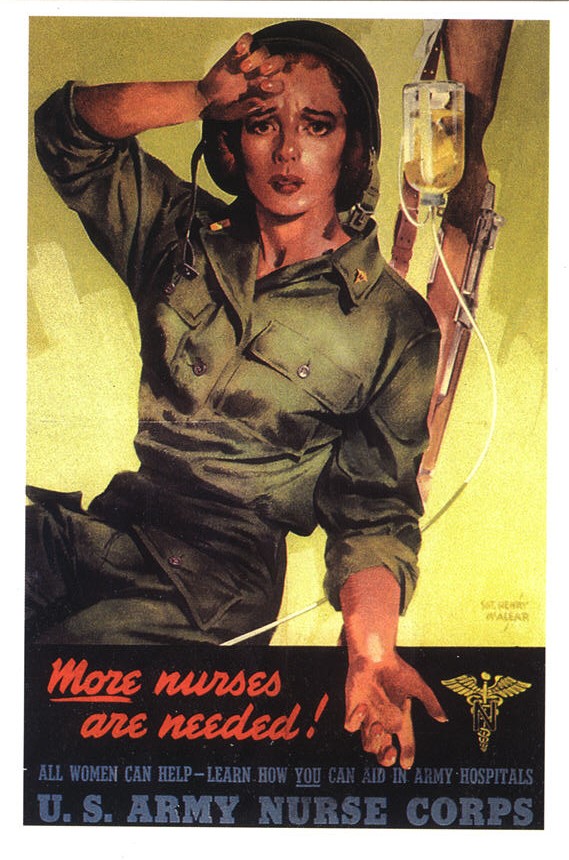
Reproduction of Army Nurse Corps recruitment poster for WWII, 2001
Created by Henry McAlear
Produced by Dover Publications Inc., United States
World War II created a huge demand for army nurses. By the end of the war, more than 59,000 nurses had worked close to the front lines, many were taken prisoner, and some died in battle. Their heroism, now recognized in subsequent conflicts, brought nursing new professional status and regard in American society.
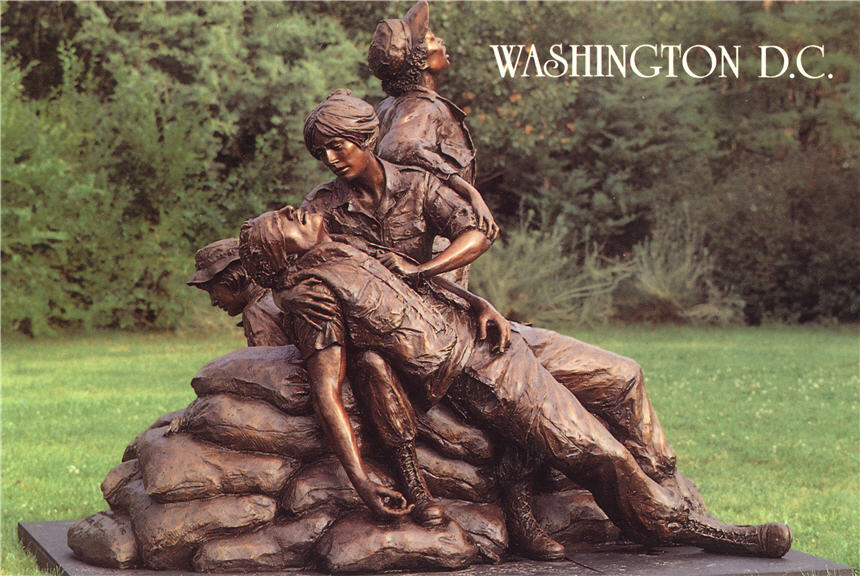
Army Nurse Corps Memorial by sculptor Glenna Goodacre, Washington, DC, 1993
Produced by Silberne Sales Inc., Washington, DC
World War II created a huge demand for army nurses. By the end of the war, more than 59,000 nurses had worked close to the front lines, many were taken prisoner, and some died in battle. Their heroism, now recognized in subsequent conflicts, brought nursing new professional status and regard in American society.
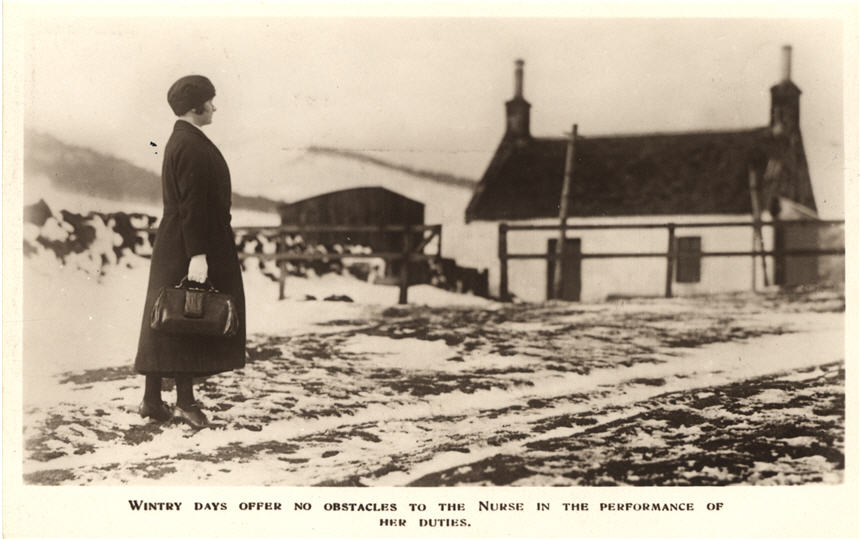
A Queen’s rural district nurse on her rounds, Scotland ca. 1927
Produced by Queen Victoria’s Jubilee Institute for Nurses
A hundred years ago, rural visiting nurses provided the only medical care available for some isolated communities. They travelled by whatever means possible to attend to the sick. Liberated from the restrictive hierarchies of hospital life, visiting and community nurses pioneered public health movements in both the United Kingdom and United States.
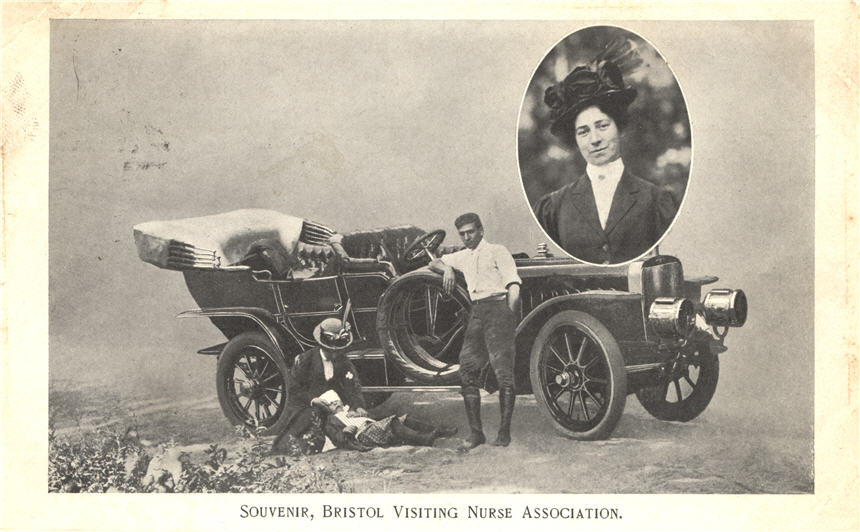
Bristol Visiting Nurse Association, United States, ca. 1909
Produced by The Bristol Press, CT
A hundred years ago, rural visiting nurses provided the only medical care available for some isolated communities. They travelled by whatever means possible to attend to the sick. Liberated from the restrictive hierarchies of hospital life, visiting and community nurses pioneered public health movements in both the United Kingdom and United States.
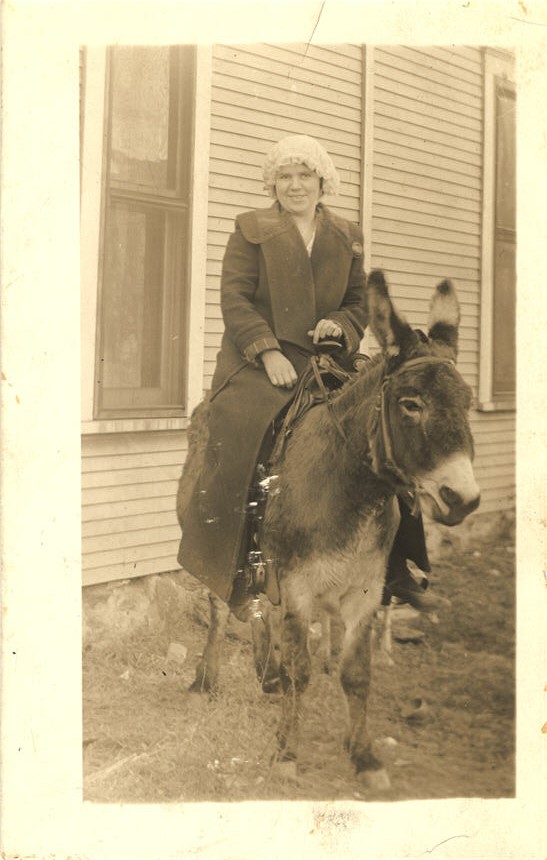
John’s nurse, a rural community nurse, United States, ca. 1914
A hundred years ago, rural visiting nurses provided the only medical care available for some isolated communities. They travelled by whatever means possible to attend to the sick. Liberated from the restrictive hierarchies of hospital life, visiting and community nurses pioneered public health movements in both the United Kingdom and United States.
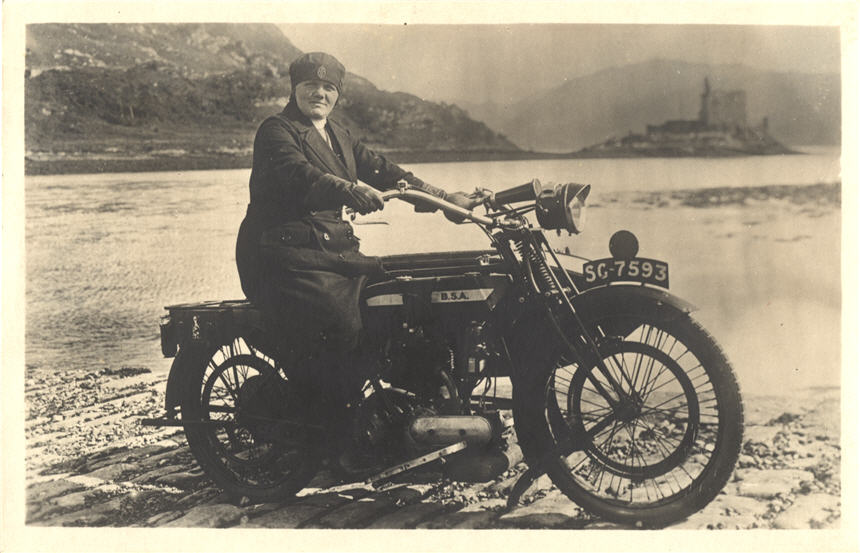
Rural visiting nurse Elizabeth McPhee, Scotland, 1926
A hundred years ago, rural visiting nurses provided the only medical care available for some isolated communities. They travelled by whatever means possible to attend to the sick. Liberated from the restrictive hierarchies of hospital life, visiting and community nurses pioneered public health movements in both the United Kingdom and United States.
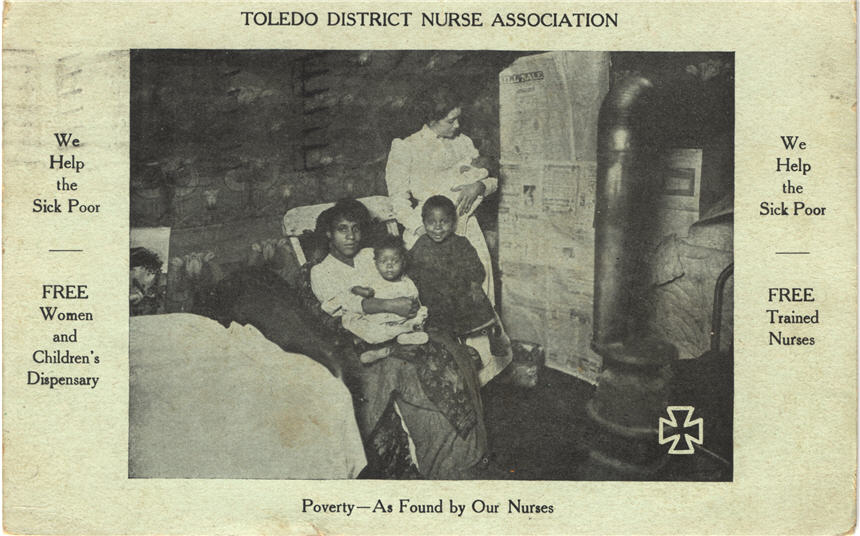
Toledo District Nurse Association promotional card, OH, ca. 1913
Produced by Toledo District Nurse Association
District and community nurses associations were one of the first charitable organizations to combat tuberculosis, a disease that was rife among those living in overcrowded housing conditions. The nurses’ concern was the health of women and children in the expanding industrial towns and cities as well as rural areas.
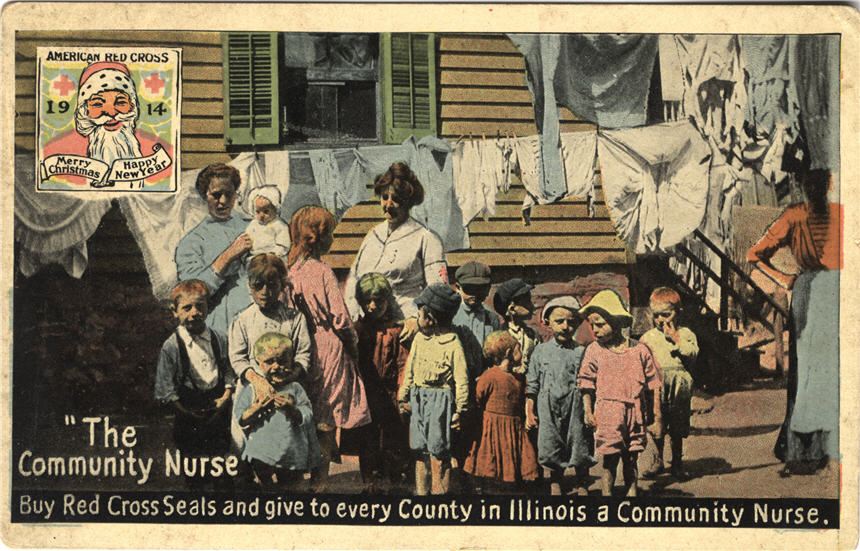
Illinois Red Cross community nurse fund promotional card, ca. 1914
Produced by American Red Cross, Illinois Chapter
District and community nurses associations were one of the first charitable organizations to combat tuberculosis, a disease that was rife among those living in overcrowded housing conditions. The nurses’ concern was the health of women and children in the expanding industrial towns and cities as well as rural areas.



